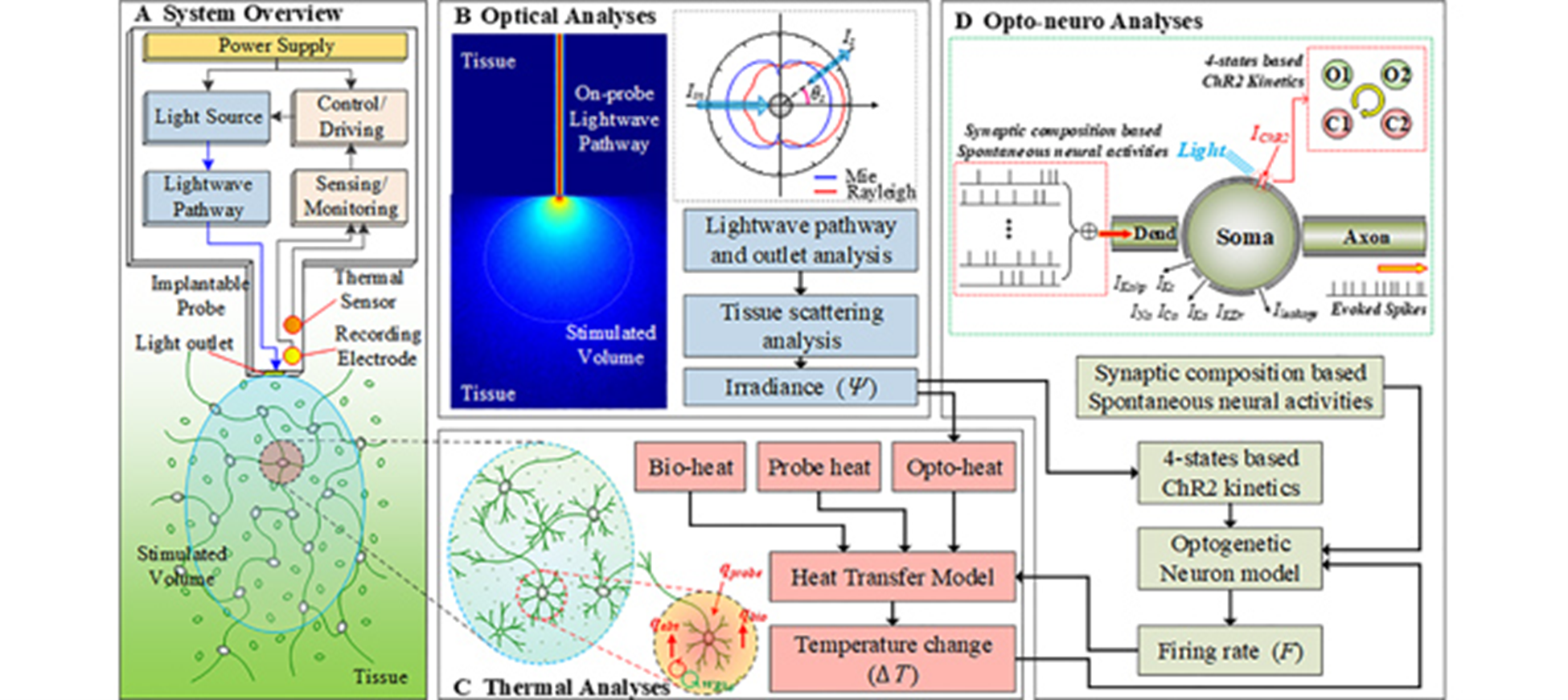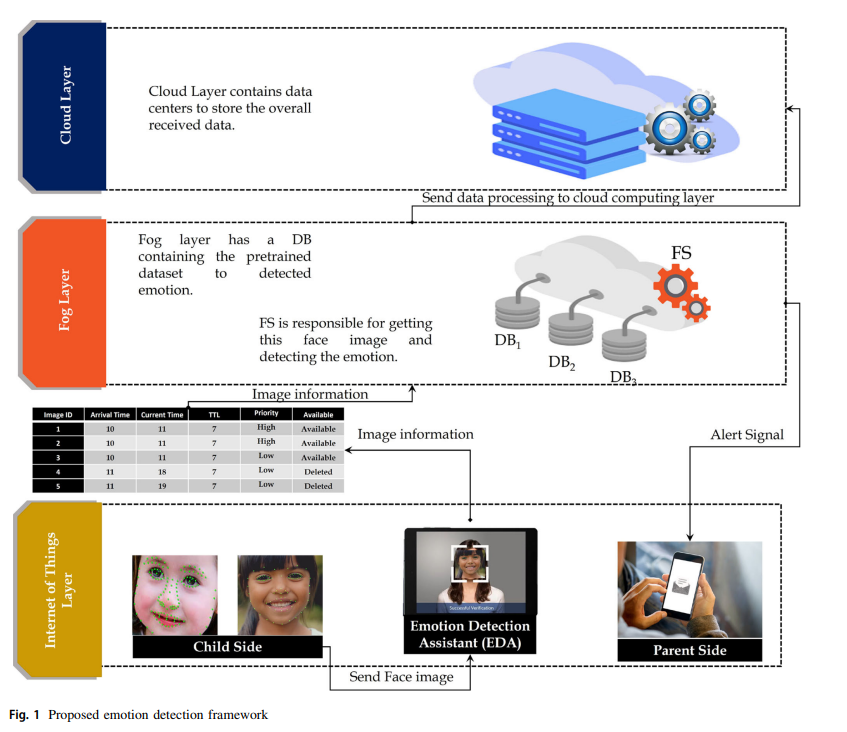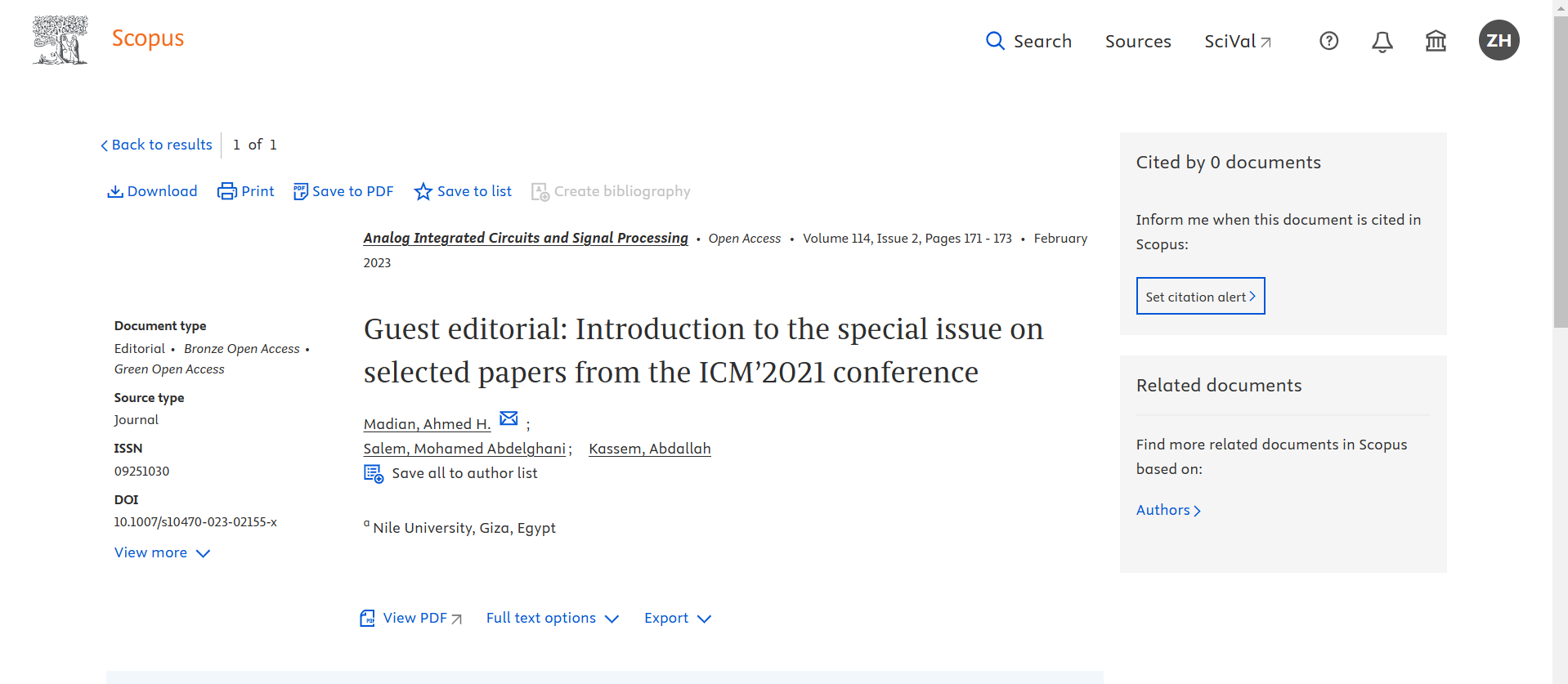
Although the light-emitting diode (LED) was discovered in the 1900s, it is now widely used in lighting, screens, and a variety of other indoor and outdoor applications. (Organic Light Emitting Diode) OLED is one of the advancing branches of LED technology. In the structure of Alq3 OLEDs, highlight-efficiency optical materials such as TPD (hole transport layer) and Alq3 (electron transport layer) have been used. Organic light emitting layers are between two electrical contacts. The anode was made of indium tin oxide (ITO), and the cathode was made of aluminiumlithium (Al/Li). This article

Optogenetic-based neuroprosthetic therapies are increasingly being considered for human trials. However, the optoelectronic design of clinical-grade optogenetic-based neuroprosthetic probes still requires some thought. Design constraints include light penetration into the brain, stimulation efficacy, and probe/tissue heating. Optimisation can be achieved through experimental iteration. However, this is costly, time-consuming and ethically problematic. Hence it is highly desirable to have an alternative to excessive animal trials. Thus, a simulation tool for optimising probe design can be an

Autism Spectrum Disorder (ASD) is a neurodevelopmental disorder that is characterized by abnormalities in the brain, leading to difficulties in social interaction and communication, as well as learning and attention. Early diagnosis of ASD is challenging as it mainly relies on detecting abnormalities in brain function, which may not be evident in the early stages of the disorder. Facial expression analysis has shown promise as an alternative and efficient solution for early diagnosis of ASD, as children with ASD often exhibit distinctive patterns that differentiate them from typically

[No abstract available]
This research paper presents the wireless data and power transfer system for optogenetics visual cortical prosthesis. The system uses the inductive coupling power transfer and 2.4GHz Bluetooth 4.0 data transfer. This system contains two hardware parts: the external headset consists of power and data transmitters, image capture, and image processing units; the subcutaneous implant PCB consists of power and data receiver and the control unit. We also present the relative image processing method for this system. The whole system could power and control the optogenetic neural stimulus of the

The applications of Federated Learning are many, and they can be used to predict electricity consumption and, at the same time, enable smart meters to collaboratively learn a shared model while keeping all their data locally in their own private database. With this approach, the central model will see more data and will work better to predict electricity consumption more accurately than the models trained on only one local Dataset. The planning of infrastructure, grid operation, and budgeting all depend on accurate load forecasting. As a result, this paper suggests federated learning for load
In smart metering applications, transferring and collecting data within delay constraints is crucial. IoT devices are usually resource-constrained and need reliable and energy-efficient routing protocol. Furthermore, meters deployed in lossy networks often lead to packet loss and congestion. In smart grid communication, low latency and low energy consumption are usually the main system targets. Considering these constraints, we propose an enhancement in RPL to ensure link reliability as well as low latency. We refer to the proposed new additive composite metric as Delay-Aware RPL (DA-RPL)

Image security becomes important topic because of increasing image usage in communication besides assures information security which is unseen in these images such as military and medical images. Blowfish is a superb symmetric cryptography that ensures a high degree of resistance to attacks. The proposed system modifies Blowfish algorithm by substituting the function in blowfish round with light weight function to save memory and resources of the platforms and Using 3-D chaotic system (Improved Lorenz) that work as a key timetable for creating Blowfish sub keys in order to increasing

This chapter introduces optimization algorithms for parameter extractions of three fractional-order circuits that model bioimpedance. The Cole-impedance model is investigated; it is considered one of the most commonly used models providing the best fit with the measured data. Two new models are introduced: the fractional Hayden model and the fractional-order double-shell model. Both models are the generalization of their integer-order counterpart. These fractional-order models provide an improved description of observed bioimpedance behavior. New metaheuristic optimization algorithms for

Diabetes is a disease in which the body does not adequately process food for energy production. Most of the food we consume is converted into glucose, or sugar, which our bodies use for energy. Moreover, the pancreas, which is an organ located near the stomach, produces insulin, a hormone that aids in the transport of glucose into our bodies' cells. Diabetes occurs when your body either does not produce enough insulin or does not use its own insulin the way it is supposed to. Sugars accumulate in your blood as a result of this. This is why diabetes is often referred to as "sugar". People with